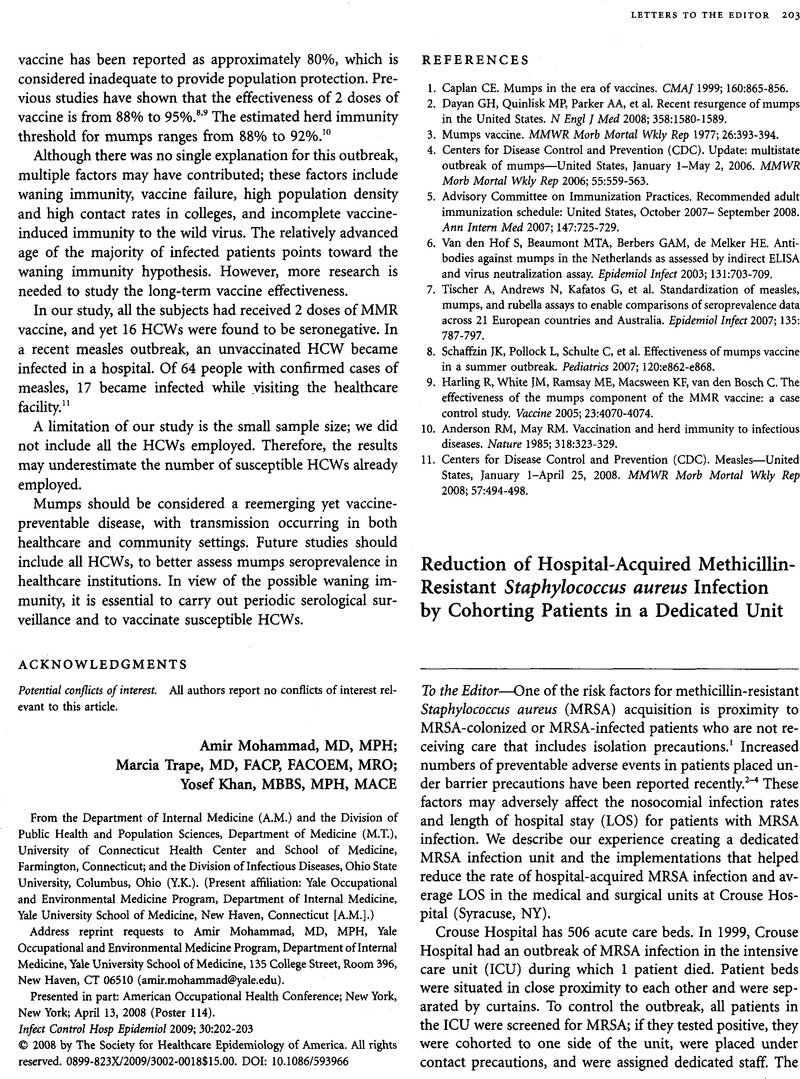Crossref Citations
This article has been cited by the following publications. This list is generated based on data provided by Crossref.
Cohn, Leah A.
and
Middleton, John R.
2010.
A veterinary perspective on methicillin-resistant staphylococci.
Journal of Veterinary Emergency and Critical Care,
Vol. 20,
Issue. 1,
p.
31.
Rosenberger, Laura H.
Hranjec, Tjasa
Politano, Amani D.
Swenson, Brian R.
Metzger, Rosemarie
Bonatti, Hugo
and
Sawyer, Robert G.
2011.
Effective Cohorting and “Superisolation” in a Single Intensive Care Unit in Response to an Outbreak of Diverse Multi-Drug-Resistant Organisms.
Surgical Infections,
Vol. 12,
Issue. 5,
p.
345.
Rosenberger, Laura H.
Riccio, Lin M.
Campbell, Kristin Turza
Politano, Amani D.
and
Sawyer, Robert G.
2012.
Quarantine, Isolation, and Cohorting: From Cholera toKlebsiella.
Surgical Infections,
Vol. 13,
Issue. 2,
p.
69.
Ruscher, C.
2014.
Empfehlungen zur Prävention und Kontrolle von Methicillin-resistenten Staphylococcus aureus-Stämmen (MRSA) in medizinischen und pflegerischen Einrichtungen.
Bundesgesundheitsblatt - Gesundheitsforschung - Gesundheitsschutz,
Vol. 57,
Issue. 6,
p.
695.
López-Alcalde, Jesús
Mateos-Mazón, Marta
Guevara, Marcela
Conterno, Lucieni O
Solà, Ivan
Cabir Nunes, Sheila
and
Bonfill Cosp, Xavier
2015.
Gloves, gowns and masks for reducing the transmission of meticillin-resistant Staphylococcus aureus (MRSA) in the hospital setting.
Cochrane Database of Systematic Reviews,
Vol. 2015,
Issue. 7,
Arruda, Micheli Coral
de Aguiar, Raquel Souza
Jardim, Wagner Mariano
Melo, Luiz Henrique
Mendonça, Tiago
Cavalcanti, Alexandre Biasi
and
de França, Paulo Henrique Condeixa
2019.
Cohorting to prevent acquisition of multidrug-resistant bacteria: An interrupted time series study.
American Journal of Infection Control,
Vol. 47,
Issue. 2,
p.
180.
Abad, Cybele L.
Barker, Anna K.
and
Safdar, Nasia
2020.
A systematic review of the effectiveness of cohorting to reduce transmission of healthcare-associatedC. difficileand multidrug-resistant organisms.
Infection Control & Hospital Epidemiology,
Vol. 41,
Issue. 6,
p.
691.


